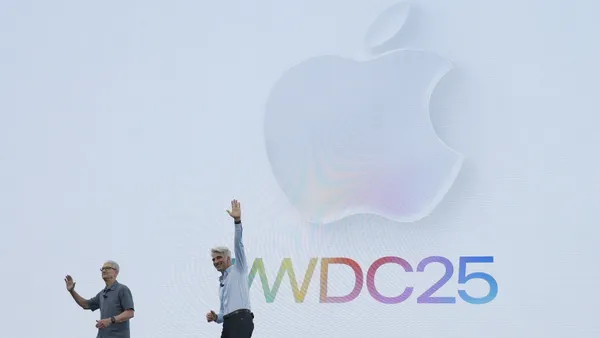Dive Brief:
- Google teased a number of generative artificial intelligence (AI) developments for advertisers coming down the pike as part of its Marketing Live showcase, including more ad formats integrated into the new AI Overview summaries in search.
- The company unveiled fresh AI capabilities for its commerce-oriented Shopping ads, including virtual try-ons and 3D-generated features. Another AI-assisted offering currently being tested helps consumers navigate complex purchase decisions, like figuring out short-term storage, when using search.
- For marketers, Google is implementing more granular controls for its AI-powered Performance Max campaigns, such as the ability to share specific font and color guidelines. Marketers will receive additional AI editing capabilities to add new objects to ads and adjust format, size and orientation.
Dive Insight:
The latest Marketing Live summit was all about generative AI, which has become a strategic priority for Google amid an arms race with other tech firms like OpenAI and Microsoft. Along with previewing new tools for marketers built around automation, Google said it would soon introduce ads directly into AI Overviews, the summaries that have begun appearing at the top of search results for many users.
AI Overviews, which started rolling out across the U.S. last week, apply generative AI to condense answers to queries drawn from a range of sources into a single blurb and have been subject to some scrutiny for producing off-the-mark results. Still, the shift to a search experience that puts generative AI first stands to be a substantial one, with significant reverberations for publishers and advertisers that rely on Google to reach audiences. Marketing Live demonstrated that Google is eager to quickly monetize the pivot.
In earlier tests, Google served ads above and below AI Overview, but it now plans to experiment with sponsored search and shopping ads within the window itself. A user querying for ways to remove wrinkles from clothing may see tips from AI Overview alongside a sponsored carousel ad displaying wrinkle-release products from brands like Downy and Bounce. The ad placements will initially run in the U.S. and advertisers do not need to take additional actions to have their existing Performance Max, search or shopping campaigns appear in AI Overview.
On the commerce front, Google is trying to spruce up shopping ads with more sophisticated virtual try-ons and 3D renderings aided by generative AI. In an example highlighted by Google, a consumer who searches “summer tops” sees an ad for a blouse from Levi’s and clicks an icon in the top right corner. A carousel of options for different apparel sizes and models representing a range of ethnicities and body types appears below the ad to customize the image to the user’s preferences. Google said it will also let shoppers go deeper on products they’re interested in through videos, summaries and suggestions for similar offerings from the same brand.
Google is working through more in-depth applications of generative AI for advertising as well. Someone who is in the market for storage space might see an ad that lets them submit a series of photos of their living room and be served options for a unit that’s the right size.
Marketing Dive has inquired as to when several of the solutions shown at Marketing Live will be available and will update this story pending a response.
Similar to other digital advertising platforms, Google wants advertisers to rely on generative AI for ad production and is taking more steps to ensure that results align with what are often stringent brand guidelines. To that end, Performance Max will soon let advertisers input custom colors and fonts and more specific image references when generating assets with the technology. In addition, Google is expanding its AI-powered image editing capabilities so that marketers can easily place new objects, like an oil painting that ties the room together, into existing images.
Google in the announcement emphasized that generative AI requires quality inputs and measurement to be useful. To help marketers centralize their data management, the company is making Google Ads Data Manager widely available, a move targeted at small businesses that don’t have the resources or know-how to juggle multiple data sources and vendors.















